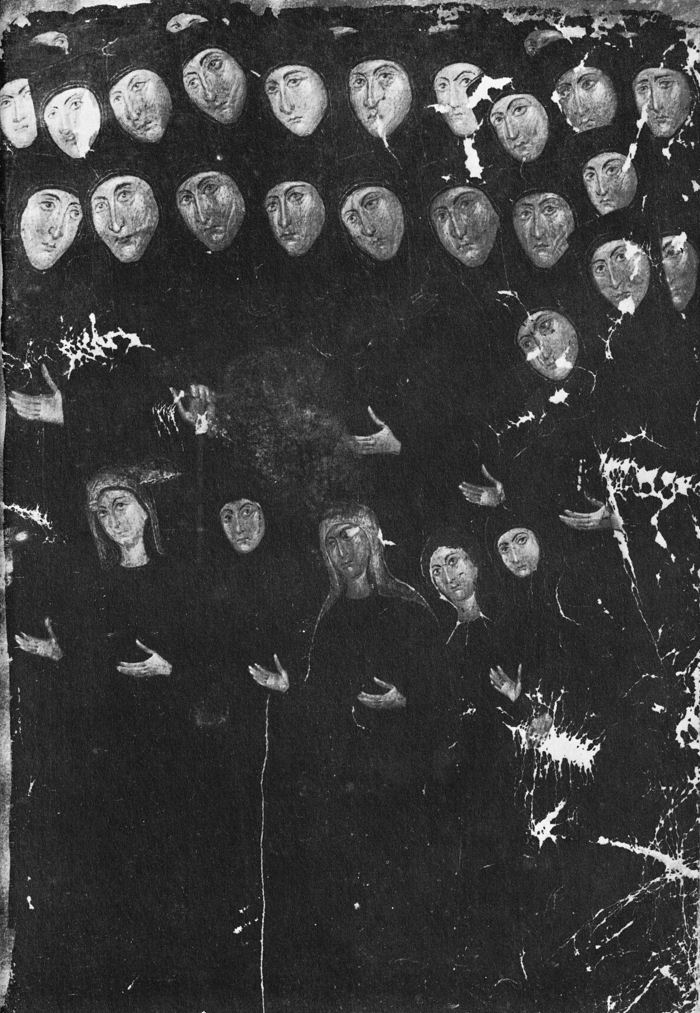EPILOGUE
Pitiful as was its end, the history of Byzantium nevertheless reads like a great epic. The Byzantines carried the torch of civilization unextinguished at a time when the barbarous Germanic and Slav tribes had reduced much of Europe to near chaos: and they maintained this high degree of civilization until western Europe gradually emerged and began to take form. It is no exaggeration to credit the empire with the preservation of European civilization from Islam in the seventh and eighth centuries. Had the empire fallen before the Arab attacks, Islam would have spread to much of Europe, with unforseeable consequences, while it was still in an amorphous state. The Slavonic east would doubtless have received the Islamic faith, as would much of central Europe. Italy, isolated between Muslim Spain and an Islam established in the Balkans and central Europe, would have been seriously threatened, and so would the papacy. Indeed, invasions from Arab-held Sicily might well have established the sway of Islam in the Italian peninsula.
The empire developed a great and original art which was decisive in much of the Slav world, and the influence of which is to be discerned in Venetian and Ottoman architecture as well as in some of the earlier schools of painting in Italy. Its civilization played an important rôle in the evolution of such widely divergent phenomena as religious music, monasticism and humanism in the west. Certainly one of its greatest services was the preservation of so much of the classical Greek literary heritage, an inheritance which is at the very basis of western humanism. And finally, it created Christian theology, the most impressive intellectual monument of the Middle Ages.
What is the relationship of Byzantium and the ‘modern Byzantine derivatives’ - that is, the Balkans and Russia - to Europe? Geographically, of course, these ‘Byzantine derivatives’ are part of Europe.
193
![]()
But historically speaking the answer is not so simple, for eastern and western Europe present strong differences, differences which were already visible by the time of Liudprand’s embassy to the court of Nicephorus Phocas. The historical European civilization of which one usually speaks is that of the Latin-German west which, arising from the feudal age, developed and experienced the Renaissance, the Reformation, the Enlightenment and modern industrialism.
The Byzantine cultural area (especially Byzantium and the Balkans) began to feel the pressure of the west in the later Middle Ages and to undergo many of its influences in commercial life, military forms, technology, literature and art. But the military victories of the Altaic peoples (the Mongols in Russia, and the Turks in the Balkans) halted this development by re-orienting these societies toward the Muslim east. Consequently the encounter between Byzantium and the Latin west, which had begun so disastrously for the east but which seemed so promising, was postponed for four hundred years (until the nineteenth century), at which time the Balkan peoples were faced with the impossible task of bridging the gap between the Renaissance and the Industrial Revolution in a very brief space of time. In Russia, where the Mongol yoke was removed much earlier, the Tsars began to make the rapprochement with the west much earlier.
But if Byzantium differed from the west and had much that to western eyes smacked of the exotic Orient, Byzantine society was as different and distinct from Islamic as it was from western society. This is still evident to the traveller today who leaves central Europe and passes through the Balkans to the Islamic countries, for as the traveller moves eastward the degree of ‘strangeness’ increases. The Balkans form the transitional area between Europe and the Islamic Near East, and so it was in the Middle Ages. The west, Byzantium, and Islam developed in areas which in part had belonged to the Roman empire and therefore all three societies shared in the Graeco-Roman tradition. It is this fact which gives a vague unity to these three societies of the medieval period, in contrast to the societies of 194 China, India and the Altai.
194
![]()

129 A group of Constantinople nuns, from a manuscript produced in that city about 1400
195
![]()
In the west this tradition was altered by the disappearance of the Greek element and the admixture of the Germanic strain, whereas in the Near East the Greek element had been weak. Though the early Arab conquerors were affected by their Byzantine environment and inherited much of Greek literary culture and Byzantine institutions, it was Persia and Arabia which finally predominated. Thus as the west and Islam gradually developed in their own ways, they moved further away from Byzantine civilization. Byzantium remained closest to the parent culture and though this endowed its society with great sophistication it also constituted shackles which deterred a more vigorous development. Byzantium represents a society and culture midway between those of Islam and the Latin west, more akin to either than the west was to Islam or Islam to the west. It was a result of this medial position that the Orthodox peoples were psychologically prepared to accept westernization at least a century before the Muslims, and that they have felt less ill at ease than the Muslims about the problems which such an adjustment has demanded.